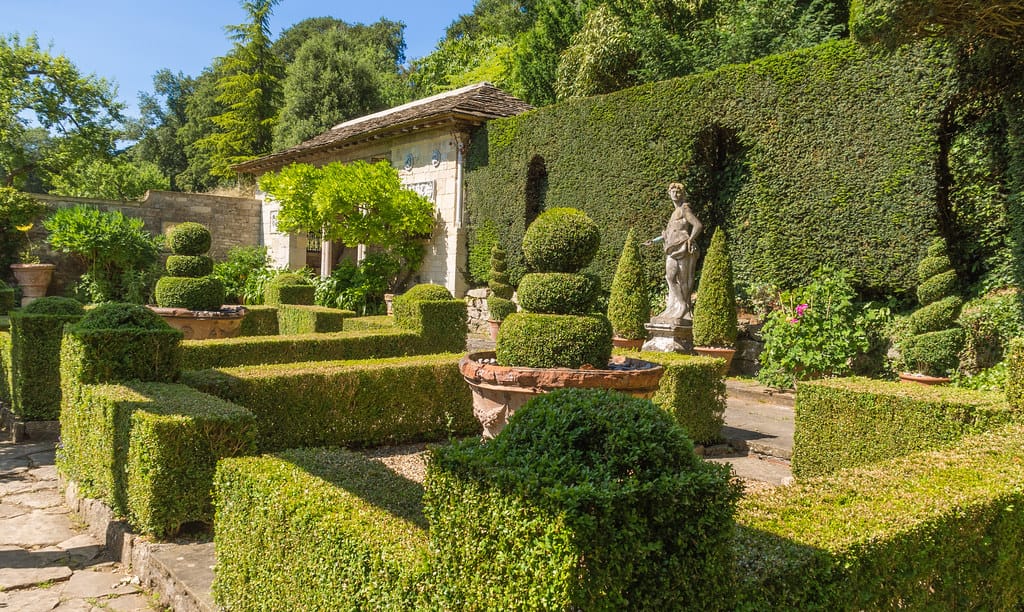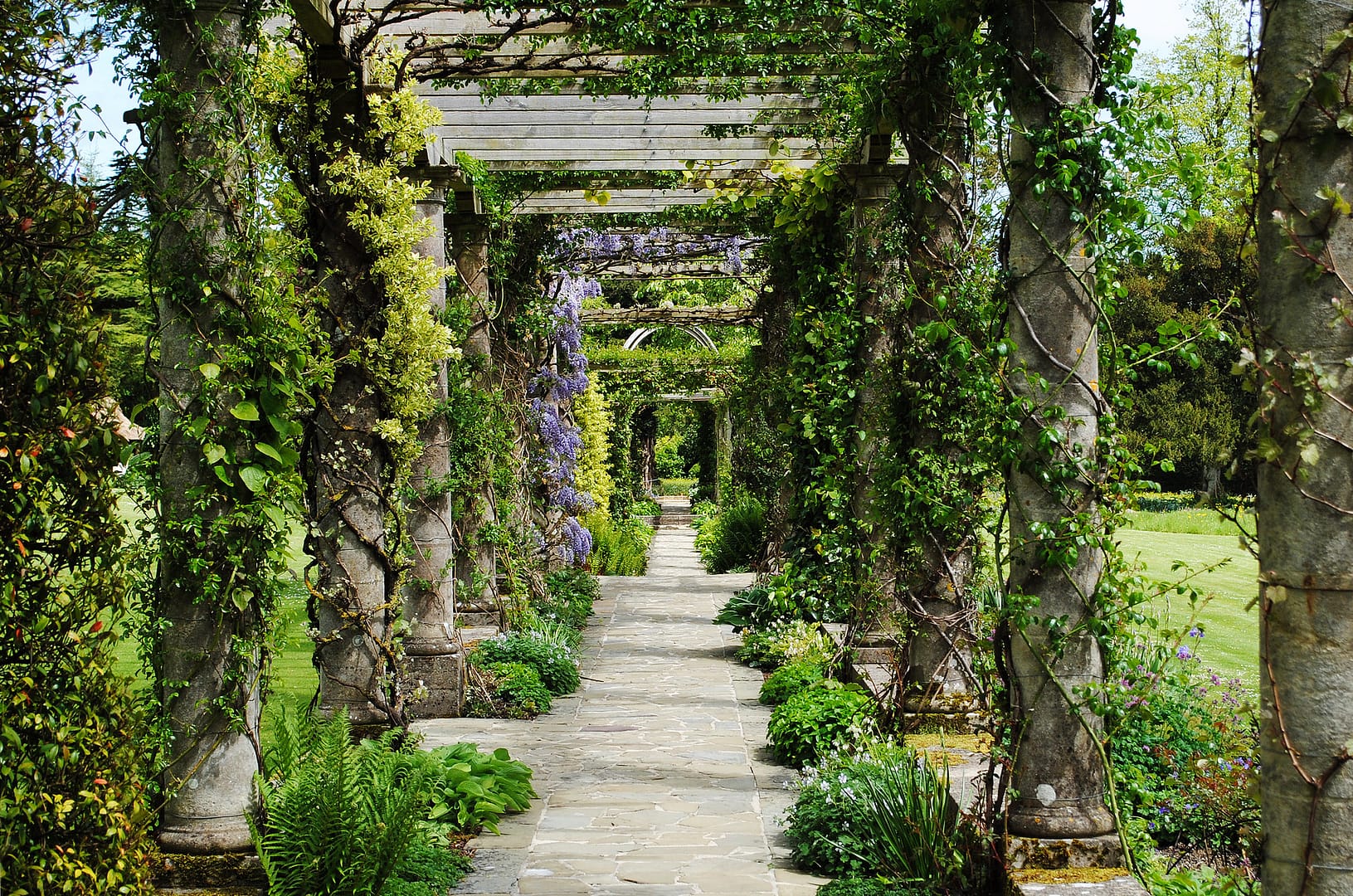As part of a series on Traditional English Gardens, we’re exploring the life and work of some of Britain’s most ground-breaking garden designers and this time we turn our attention to a name that has inspired some of the most notable landscapes in Britain – Harold Peto.

Peto’s innovation and creativity in landscape architecture left a lasting mark on the world of gardens and design during the late 19th and early 20th centuries. His enchanting creations seamlessly blend classical elegance with natural beauty and continue to leave a legacy that inspires landscape architects and enthusiasts around the world.
Early Life and Influences:
Born in London in 1854, Harold Ainsworth Peto exhibited an early passion for art and architecture. After completing school, he served as an apprenticeship with a joiner for almost a year before joining an architectural firm. Within a year, he had become part of the London-based architects Karslake and Mortimers. From here, he went into partnership with Ernest George; this would last sixteen years. He and George designed houses in Kensington and Chelsea, as well as country houses. Unfortunately, ill health compelled him to leave London. However during this time he kept diaries recording extensive travels to Italy, America, Spain, Greece, Egypt, Italy, Germany and France. These experiences clearly left an ongoing impact that can be seen throughout his later works.
Iford Manor Gardens
Iford Manor Gardens in Wiltshire stands as a testament to his landscaping design and talent. Acquired by Peto in 1899, the gardens underwent a transformative journey. Drawing from Italian Renaissance and Mediterranean influences, Iford Manor Gardens features terraces, pools, statuary and architectural elements that harmonise with the natural landscape.
The grounds of this manor are a stunning example of how influence from around the world can be incorporated together effortlessly whilst maintaining British heritage. The grandeur of stonework with waterfalls of blooming wisteria, helps to transport us to a Romanesque landscape.

Iford Garden, still accessible to the public, is privately owned by the Cartwright-Hignett family. Elizabeth Cartwright purchased Iford from Sir Michael Peto in 1965, undertaking the task of revitalising the garden, which had been thought ‘lost’ during the post-war period, a fate shared by many gardens of that era.
Villa Gamberaia, Italy
Villa Gamberaia, situated near Florence, Italy, showcases a monumental design that reflects the profound influence of the country. Collaborating with Princess Ghyka, Petro embarked on a comprehensive restoration and redesign of the villa’s gardens, demonstrating his passion and keen eye for detail.

The design seamlessly blends historical context with a revitalised aesthetic, incorporating elements like topiary, intricate stonework and water features. Surrounded by lush fauna, this sanctuary, originally crafted for royalty, remains a heavenly paradise cherished for momentous occasions, such as weddings.
Gardens of Easton Lodge in Essex
Gardens of Easton Lodge in Essex, transporting us to the Edwardian era are the Gardens of Easton Lodge in Essex. These gardens are a captivating blend of formal structures and naturalistic landscapes.

A diverse portfolio featuring the Italian Gardens, Peto Treehouse, Walled Garden, and The Glade and Stirling Walk. Each boasts a distinctive design and style, serving as a testament to the vast array of influences and artistic inspirations that can be seamlessly woven into the tapestry of expansive landscapes.
These unique offerings beckon visitors to embark on a journey to explore gardens from diverse viewpoints, cultures, contrasts, and colours.
West Dean House, Sussex
West Dean House is another remarkable instance of Peto’s innovative work is evident in West Dean House, situated in Sussex.
The striking Edwardian pergola, stretching an impressive 300ft, stands out as one of the key features of the estate.

Once again, the integration of various materials, from stonework to wood and water, harmoniously complements each other, reflecting his impactful journeys across Europe and the globe. It is clear when looking at Peto’s designs that he found the perfect blend of materials, flora and fauna that created outdoor spaces that have continued to impress and inspire generations. The estate became the home of West Dean College, a centre to study conservation, arts, crafts, writing, gardening and music.
Legacy and Impact:
Harold Peto’s legacy lives on not only in the physical spaces he designed and crafted but also in the impressions that have been sown through gardens throughout the world. His emphasis on blending architecture with nature, creating harmonious landscapes, and incorporating historical elements into modern designs continued to influence generations of landscape architects.

Harold Peto’s contributions to landscape architecture have left an enduring impact on the way we perceive and design outdoor spaces. His ability to fuse classical aesthetics with natural surroundings has made him a revered figure in the history of garden design. As we admire the beauty of Iford Manor Gardens and other masterpieces. We honour a visionary whose imagination continues through modern-day landscaping and design.
Did you want to read more about influential landscape designers? Read more here.


